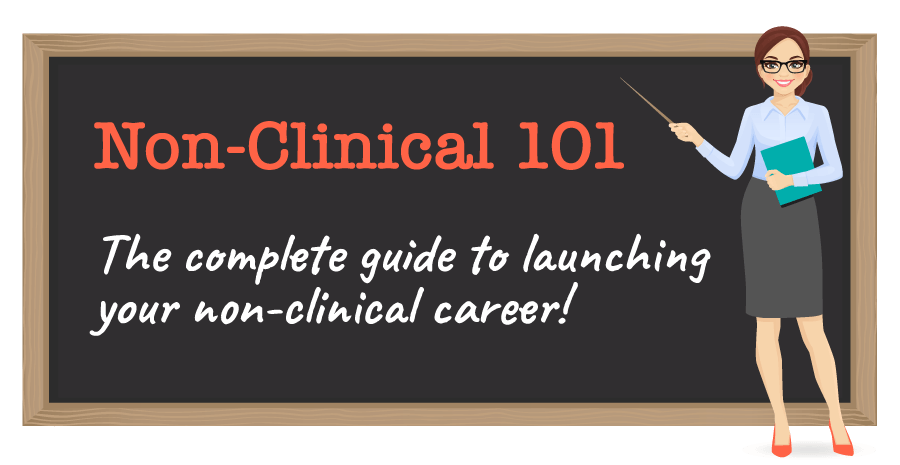This week’s non-clinical spotlight features a PT who works as VP of Physical Therapy and Patient Experience at OneStep!
This post may contain affiliate links or codes. This won’t increase your cost, but it helps keep TNCPT alive, and free of annoying ads! Thank you for your support. 🙂
What is your full name, title, and company name for your current, primary role?
Hila Glick, B.PT – VP of Physical Therapy and Patient Experience @ OneStep

What additional roles do you currently have?
Head of Physical Therapy and Customer Success
Where are you located?
Tel Aviv, Israel
Where did you go to PT school, and what year did you graduate?
Department of Physical Therapy at the Leon and Mathilde Recanati School for Community Health Professions at Ben Gurion University, Beer Sheba, Israel, 2011
What did you do when you first finished school, and for how long?
I started out at Hadassah Medical center in Jerusalem and from there continued to Reuth Rehabilitation hospital in Tel Aviv. I worked at the rehabilitation centers for 6 years.
In what setting(s) did you work, and what types of patients did you treat?
I worked in the inpatient units treating orthopedic and neurological patients, ages 18 to 100.
What did you enjoy about your early roles? What didn’t you enjoy?
I was, and still am fascinated by the world of physical therapy. I enjoyed seeing things for the first time, thinking with my colleagues about how to treat the patients, and learn from their experiences. Honestly, I enjoyed all parts of the job! I went to work every day with a big smile and a lot of enthusiasm.
But I did end up spending some time outside of clinical roles, and outside of PT altogether, which prepared me for coming back into the PT world at OneStep.
What else have you done since then, prior to your current role?
Prior to my current role, I worked as a customer success manager in a couple of companies outside of the PT space. I worked in tech in California at that time. Alongside some of these roles, I continued treating patients in a private practice.
When and why did you decide to do something non-clinical?
My professional career was always split into the work of physical therapy and the high tech industry. Before I became a physical therapist, I graduated with another bachelor’s degree and worked in the startup world. I had roles such as human resources and recruitment, technical support, quality assessment and customer success. I really enjoyed this work, but I also found a new passion in my clinical work as a PT.
Now, in a digital PT company, I feel like I am truly combining my two areas of interest: technology and physical therapy. There is so much happening in the PT world outside of the traditional physical therapy practices. Innovation is changing the industry, and I joined OneStep because I really believe they are making PT better for everyone: therapists and patients.
What are you doing these days?
Today, I’m leading the Physical Therapy and Customer Success teams at OneStep. OneStep is a digital PT platform that combines expert PTs with innovative sensor-based technology that does remote patient monitoring. Our PTs utilize RPM to analyze and understand our patient’s progress remotely, and use our platform to effectively and efficiently treat patients.
I am focused on developing the practice of physical therapy alongside the customer experience, developing the full patient experience, and improving our service. Our PTs are at the forefront of innovative therapy, and in my role I help lead these efforts to shape our service into the best it can be.
Are you still treating patients, or are you solely non-clinical?
I’m fortunate to still have the opportunity to treat patients through the OneStep app. Since all of my PT is done remotely, and in my own time (and I only see my patients face to face 1x a month), treating patients doesn’t feel like as much of a hassle as before.
What percentage of your time is spent clinically vs. non-clinically?
In the OneStep practice, I only spend about 1.5-3 hours with a OneStep patient per month. The automated platform allows me to communicate with patients via chat, but without having to speak with them ‘live’ too often. I can give my patients top quality care, but I still have the majority of my day free to focus on the administrative sides of running the PT and Customer Success teams at a technology company.
I spend probably 70% of my time focused on building and improving the product, working with the team members on their practice, clinical and business thinking/research/reading, and hiring.
How long have you been in your current role?
I joined OneStep 2 years ago. The company is only about 3 years old, so I’ve been here for most of the ride. I find it very rewarding to be a part of a small company as it grows.
How did you find your job? Did you apply or find it through a connection?
This actually is a funny story! I was always looking for a job that would combine the world of physical therapy and customer success, which I had experience in and love so much. I always had an eye out, but never saw anything like that. Most PT jobs were just clinical, traditional roles. I then stumbled across an article about this promising company that was in its early stages and read that they were working on an app to develop an innovative physical therapy practice based on remote walk analysis. I was hooked immediately! I reached out directly to the CEO, Tomer Shussman, via LinkedIn and we scheduled the interview.
What was the interview like for the role?
Since this was during early COVID times the first interview was on the phone and felt more like a conversation. I was very excited about this opportunity and couldn’t hide it. I was lucky enough that the feeling was mutual and that what I had to offer fell right in place with what the company needed!
What are some of the things you did to stand out, take initiative, and advance in your career?
I started out as the only physical therapist in the company and the one person leading the customer success team. I was responsible for treating all the patients, developing the practice and working with the product and technology teams as “the PT expert” in the room.
As our practice grew, we hired additional PTs and built up the customer success team. I truly feel that my passion for this company, the team around me, and my sincere belief in what OneStep does is what helped with my success through the company.
How have people reacted to you leaving patient care?
Since I still see patients remotely and as part of the digital PT evolving industry, most people are intrigued and wonder how this works. I frequently get asked if I miss treating patients in person. Honestly, I do. But I also find it very meaningful to be focusing on the wider view that will enable more patients to receive care.
What’s a typical day or week in the life like for you? What types of tasks and responsibilities fill your time?
My work is diverse, combining focus and attention to clinical, product development and science/technology development. All of this, alongside the development of the customer experience. We have internal meetings with the different departments in order to grow our practice and make sure our patients receive the most out of it.
I’m focused on how a patient experiences OneStep, from the moment they download and speak with a customer success rep, to the day they finish their course of care. I also pay attention to the convenience and process for the PTs treating patients.
My goal is that the customer-facing app and the PT-facing dashboard products allow for an efficient and effective and convenient process for both the PT and patient.
What are some of the rewards of your role? What are the biggest challenges?
The biggest reward is to hear positive feedback from our patients all around the word and hear from a patient that he or she feels better due to their treatment. As a physical therapist, this is the most important part of my role.
The biggest challenges are to be able to provide the best service possible, both on a clinical level as well as on the technical side. Another big challenge is to explain to patients their gait analysis and make this data accessible, meaningful, and interesting. We’re really giving the patients unprecedented access to their gait data and we want to make sure that patients truly understand and can benefit from this data.
How did your clinical background prepare you for this role? Which skills transferred?
While this might sound strange, there is a lot in common between the skills required for developing customer service practice and treating patients. I think that having experience in both worlds prepared me perfectly for this role. There are many qualifications and skills that are important to help me be better in my job that transferred from purely clinical care to my current role: being attentive, patient, empathetic to the client’s needs, being creative, open to continuing learning…to name a few.
Roughly speaking, how are the hours and pay compared to patient care?
In Israel, being part of the healthcare system is difficult financially. Working in a technology startup is much more comfortable in that aspect. However, working hours are not comparable – while the hospital day is relatively short, working in an evolving startup is more of an ‘around the clock’ job. I’m lucky enough to love my job and enjoy the time I spend doing it.
What type of person do you think would do well in your role?
The role, to start with, requires a set of skills and experience in both physical therapy, technology and customer experience. It is important to be able to work with different teams, express your clients needs clearly, complete assignments from start to end, and prioritize.
Do you work remotely or onsite?
I mostly work onsite, however I have the flexibility to work remotely when need be. Many of our PTs do work remotely, entirely.
Does your organization hire PT, OT, or SLP professionals into non-clinical roles? If so, what type of roles?
We currently are looking to hire PTs for clinical roles working with the OneStep practice. While these are clinical roles with patients, I also see these roles as innovative and not traditionally-clinical roles. These are remote roles with opportunity to utilize new technology and new practices. That being said, the core of the work is still treating patients.. We do occasionally hire PTs for non-clinical roles that are more focused on bizdev or product.
Did you read any books, take any courses, or do anything special overall to get you where you are today?
I attended several customer success conferences throughout my career, read the book ‘Farm Don’t Hunt’ by Guy Nirpaz and several articles about digital/remote health treatment.
What is a typical career path for someone in your role?
I feel there is no typical path. I expect to grow with the company and lead our team and product to help as many people as possible by providing high quality remote physical therapy.
What is next for you? What are your high-level career aspirations?
I plan to continue managing the client experience department as well as lead and grow our physical therapy team.
What career advice would you give yourself that you wish you had during school?
I would remind myself that every job, work experience and learning opportunity are important and will help with future opportunities. You never know when something you experienced or struggled with in the past will come up again, but next time being much easier to deal with and master.
What would you teach to today’s graduate students in your profession, if you had the opportunity?
I think that being able to treat patients remotely requires special skills that should be addressed in current studies. During COVID, most physical therapists had to treat or connect with patients digitally at some point. Preparing students during their studies for similar cases can be very helpful and prepare us all for the future.
Where can people find you on social media?
Find me on LinkedIn, or e-mail me!
Are you looking to start your own non-clinical career, but need some help along the way?





